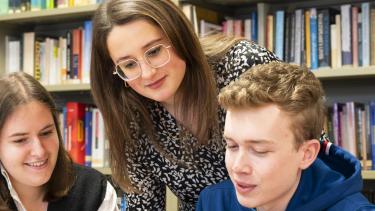These studies enable the development of an in-depth knowledge of Romance languages and, mainly through literature, of a culture, of which they are one of the fundamental vehicles: the French domain in all cases and, depending on the options chosen, the Spanish or Italian domain.
These languages and their literatures are studied both in their historical forms and in their contemporary configurations. These studies develop theoretical knowledge in linguistic and literary registers, and particular attention is paid to the critical dimension of knowledge and analytical frameworks.
Find out more about the Department of French and Romance Languages and Literatures
Spotlight
News
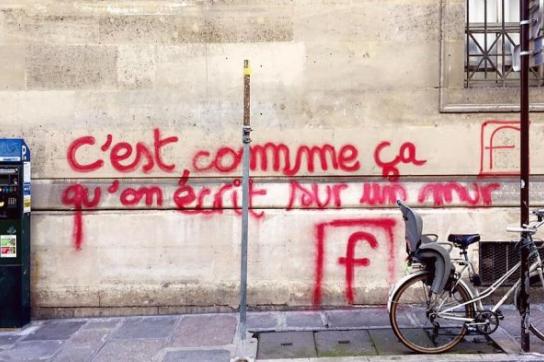
UNamur: the nerve center of wild literature
UNamur: the nerve center of wild literature
Last June, the UNamur Board of Directors officially announced the creation of the Observatoire des Littératures Sauvages (OLSa). Founded in 2022 under the leadership of Denis Saint-Amand, FNRS qualified researcher in the Department of French and Romance Languages and Literatures, this research center studies how literature is constructed outside of books and literary institutions, through alternative objects or channels.
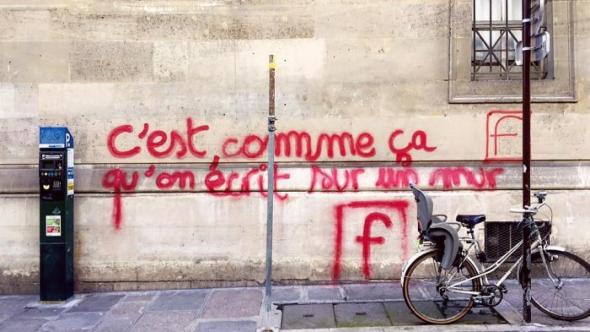
Tags, banners, collages, flyers, and posters... all these media fall under what is known as "wild literature." We owe this expression to Belgian academic Jacques Dubois, who, in his book L'Institution de la littérature (The Institution of Literature), used it to refer to works produced outside the traditional publishing circuits. Nearly fifty years later, the Observatoire des Littératures Sauvages (OLSa) has made these literary practices—often raw, artisanal, and ephemeral—its field of exploration.
The OLSa was created thanks to a FNRS Scientific Impulse Mandate awarded to Denis Saint-Amand at the end of 2020. It brings together a dense, open, and international network of researchers interested in cultural and literary productions that can be described as "wild." "One of the interests of this center is to participate in the decompartmentalization of literary studies by bringing them into dialogue with specialists in disciplines such as history, sociology, anthropology, and political science," emphasizes Denis Saint-Amand.
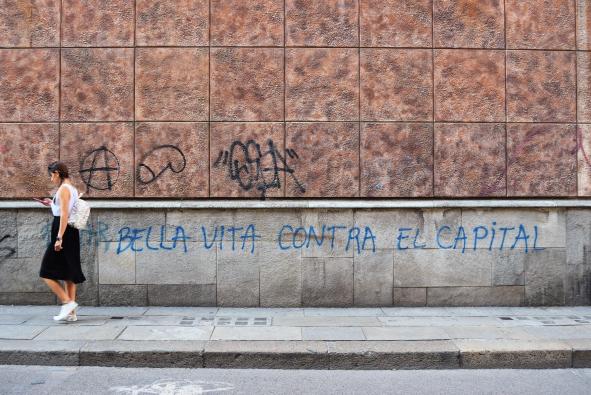
From protest writings to the cries of supporters
Since its inception, OLSa has tackled various projects and organized several conferences and study days. These include the inaugural symposium in June 2022 devoted to the writings of protest. More recently, the center's members have taken an interest in the poetics of the football stadium: the discourse (banners, chants, and shouts of supporters), their poetics, and their modes of production, dissemination, and circulation, mirroring the social and political issues to which they relate.
Over the course of these meetings, Namur has become a unique and recognized hub in this field of research. This is something that Denis Saint-Amand is particularly pleased about. "The OLSa is a rather unique space. It brings together people from a variety of backgrounds to discuss these issues, launch doctoral or postdoctoral research, and also involve students—by inviting them to work on written cultures outside the canonical literary corpus and giving them the opportunity (through seminars and conferences) to encounter other voices other disciplines."
Recognition that came at just the right time
OLSa was officially recognized as a research center in June 2025, three years after its founding. "I thought it would be useful to see if it worked, if the center could attract people," explains the researcher. "That's why we organized various conferences and study days, produced publications, etc. This recognition brings stability and visibility to the center. It's paradoxical for a space dedicated to practices that are not very institutional, but it's also and above all a great sign of confidence from the university," says Denis Saint-Amand.
During the 2025-2026 academic year, OLSa will organize an international seminar on poetic practices outside of books, made possible in part by a research grant from the FNRS. Among other things, it will focus on Instagram accounts dedicated to street poetry, lyrical graffiti in barracks and prison cells, and poetic performance in public spaces. More details on the OLSa website!
Learn more about the Observatoire des Littératures Sauvages (OLSa).
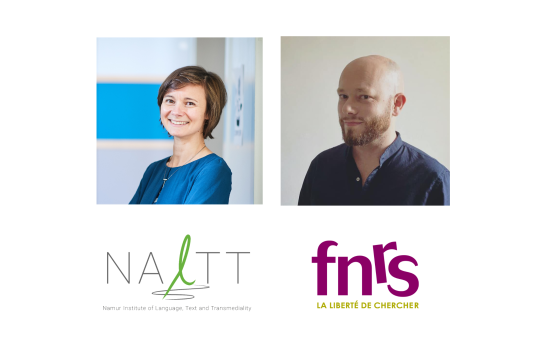
FNRS 2024 calls: Focus on the NaLTT Institute
FNRS 2024 calls: Focus on the NaLTT Institute
Two researchers at the Institut du Langage, du Texte et de la Transmédialité (NaLTT) have just been awarded funding from the F.R.S - FNRS following calls whose results were published in December 2024.Composed of researchers in linguistics and literature, the NaLTT Institute constitutes an interdisciplinary space for diachronic and synchronic research into verbal and multimodal communicative practices that manifest themselves in, are shaped and/or regulated by culture and society.

The institute comprises four research centers: Pluri-LL, the Centre Nerval, the Observatoire des Littératures Sauvages (OLSa) and the Laboratoire de langue des signes de Belgique francophone (LSFB-Lab).
Two researchers from NaLTT have just been awarded funding from the F.R.S - FNRS following calls whose results were published in December 2024.
Laurence Meurant's "DiVa LSFB" research project (PDR)
An estimated 72 million people worldwide use a sign language. The 150 signed languages recorded to date (The Ethnologue) are derived from the sociolinguistic dynamics of different deaf communities, their history and their interaction with society as a whole.
Like all languages, signed languages evolve and vary. Variations linked in particular to the age, region, gender, linguistic and educational profile of signers are attested in the use of most signed languages. Sign language in French-speaking Belgium (LSFB) is no exception. For example, the former boarding schools for the deaf established in Brussels and Wallonia still have regional variants. While the older generation's sign language shows traces of the restrictive context of oralist teaching and the disregard for signed languages at the time of their schooling, the younger generation's language is tinged with numerous borrowings from American Sign Language (ASL) or international signs, symbols of openness and mobility. Increasingly, LSFB signers are highlighting the linguistic divergence between age- and region-related LSFB varieties.
The Research Project (PDR) "DiVa LSFB - Linguistic distance and variation in French-speaking Belgian sign language: a mixed-methods analysis" aims to understand this phenomenon of linguistic distance and variation within today's LSFB. It aims to provide a multidimensional analysis of this complex phenomenon that is as representative as possible of the social ecosystems in which deaf people live. Can generational or regional profiles be identified from an analysis of LSFB usage? What linguistic characteristics and strategies promote or hinder intercomprehension between young signers and their elders? What ideas and beliefs do signers have about the degree and reasons for variations in LSFB, and about the elements that promote or hinder intercomprehension? And in their day-to-day practices, how do they handle interaction with younger and older signers, and with those who use regional varieties other than their own? To answer these questions, the team will use a combination of corpus data, experimental data on inter-comprehension between signers, as well as ethnolinguistic-type data.
Amandine le Maire completed her thesis at Heriot-Watt University (Edinburgh) as part of the Mobile Deaf project (ERC, under the direction of Prof. A. Kusters). After coordinating the LSFB-French Interuniversity Certificate in 2023-2024, Amandine joined the LSFB-Lab as part of "DiVa LSFB" and became the first deaf post-doc involved in research on LSFB, her mother tongue.
She will be working closely with Sibylle Fonzé, Bruno Sonnemans and Laurence Meurant. This project is part of a wider collaboration with Pr. Mieke Van Herreweghe (Universiteit Gent), Myriam Vermeerbergen (KULeuven) and Jeroen Darquennes (UNamur, NaLTT) on the study of linguistic change in Belgian sign languages.
This collaboration is taking shape in perfect synchronicity in the project Changing signs & signs of change: hoe variatie en taalcontact de taalverandering in Vlaamse Gebarentaal in hand werken which has just been selected as a "Senior onderzoekproject" by the FWO - Flanders' equivalent of the FNRS.
Mini CV
Laurence Meurant is a linguist, F.R.S.-FNRS Qualified Researcher at the University of Namur and President of the NaLTT Institute. She directs the Laboratoire de Langue des signes de Belgique francophone (LSFB-Lab) where she is developing the first discursive studies on LSFB and on the comparison between French and LSFB.
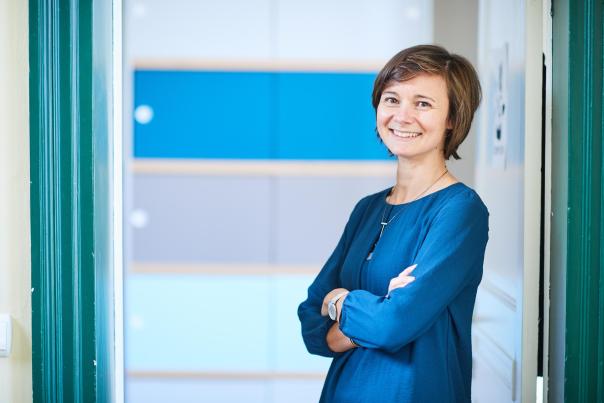
In partnership with the Faculty of Computer Science (the teams of Professors Anthony Cleve, Benoît Frénay and Bruno Dumas), it has initiated the development of digital tools in the service of bilingualism and the visibility of LSFB.
The Fonds Namur Université is the University of Namur's interface for its fundraising for patronage, donations and sponsorship. Thanks to the support of donors, the LSBF-French bilingual dictionary project was able to see the light of day.
Discover Laurence Meurant through the program Les Visages de la recherche, FNRS-LN24 - L. Meurant (January 2025) :
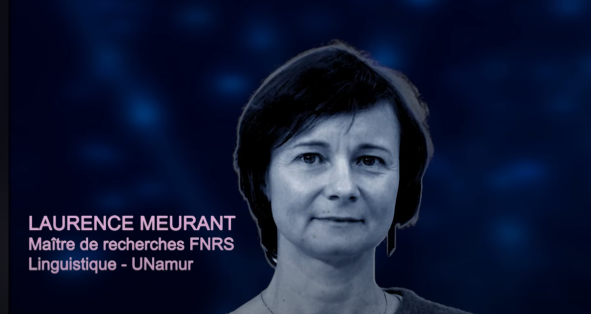
Denis Saint-Amand's "La poésie sur les murs" research credit (CDR)
This project takes as its starting point the fact that the acclimatization of poetry to advertising communication has helped to reinforce its urban inscription, so that today it frequently appears on the walls of our cities, often through fragmentary quotations and isolated verses. It invites us to take these writings seriously and to question the forms, uses and functions of poetic inscription in contemporary urban space.
The aim is to distinguish between authorized inscriptions (commissioned frescoes, window poetry and other installations conceived in collaboration with public authorities) and "wild" writings (spontaneous, raw, ephemeral).
On the side of authorized writings, we find notably quotations from canonical works, but also unpublished works participating in the production of legitimized authors, created to adorn public buildings - which raises a series of questions: is poetry reduced in this case to a simple decorative function? Which texts/extracts are chosen, and in which locations? What forms are favored? Are we banking on formulas that function as "inspirational" or "feel-good " maxims or proverbs, on emblematic extracts aimed at maintaining a common heritage? Should these productions be seen as the manifestation of a soothing "artist capitalism", or can they be seen as mediations that make poetry visible, serving as a first contact and an incentive to discover complex texts? How is the exhibition of the text designed materially (typography, colors, articulation with illustrations, etc.)?
On the side of wild writing, not based on commissions and not benefiting from authorization, other forms and conceptions of poetry are activated, from lyrical slogans to ironic watchwords and from puns to absurd aphorisms. These statements come under the heading of a vivid word vaguely disruptive of the everyday in that it brings salience, playfulness, incongruity, that it de-routinizes.
This is not to overplay the gap between institutional and wild poetic writings: it's striking to observe the multiplication of writings banking on an imaginary of illegality and protest while making it possible to transfer them to other, more instituted and, above all, potentially more sellable media - so that it's also the gentrification(*) of wild writings that we'll be studying in this framework.
(*)Gentrification: the process by which the population of a working-class neighborhood makes way for a more affluent social stratum.
Mini CV
Denis Saint-Amand is a professor in the Faculty of Philosophy and Letters and a member of the NaLTT Institute. In 2020, he was awarded a prestigious Mandat d'Impulsion Scientifique (MIS) by the F.R.S - FNRS, which enabled him to found L'Observatoire des Littératures Sauvages (OLSa).
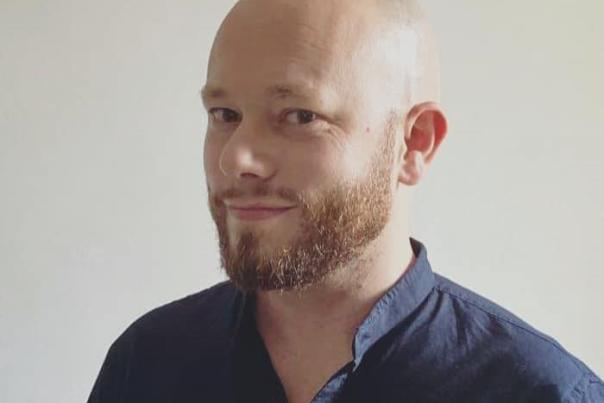
This observatory is devoted to the way literature is also constructed outside the book, through alternative objects and channels, which sometimes nourish and energize the world of letters, but can just as easily evolve at a clear distance from it.
Numerous extra-book productions exploit the resources of literary communication: the handwritten album, the guestbook, the leaflet, the banner, the graffiti, the handmade documents cobbled together by the Surrealists and Situationists, the mimeographed newspaper, the fanzine or, of course, the screen, among many examples, are among these written media welcoming hybrid productions making room for lyricism, fiction or formal experimentation.
It is to these productions that the Observatoire des Littératures Sauvages is dedicated, whose members, from a variety of disciplines, set out to study the articulations of these literary practices to the social world.
Upcoming events
International Francqui Chair 2024-2025 - Multilingualism and language learning. Challenges & Opportunities
This International Franqui Chair 2024-2025 is a joint initiative of VUB, Ghent University and Namur University. The Chairholder is Prof. Dr. Jean-Marc Dewaele. He will be present at UNamur for a series of lectures between February 19 and April 2, 2025. A general public conference entitled "How to raise children to become multilingual" will take place on March 11, 2025.
Follow NaLTT on social networks :
FNRS, the freedom to search
Every year, the F.R.S.-FNRS launches calls for funding for fundamental research. It has set up a range of tools enabling it to offer scientific and technical personnel, equipment and operating resources to researchers, who are the bearers of a project of excellence.
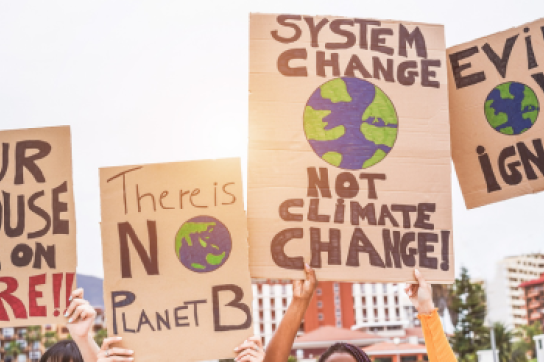
Language and climate change
Language and climate change
"Politic tac, tic tac, le climat n'attend pas!", "A diploma but no future?", "Cop ou pas cop de tenir vos engagements" What is behind the slogans of the Youth for Climate movement? Laura Degrande, a doctoral student in languages, literature and translation, is conducting research on the wild writing of protest. During the NaLTT Institute's Spring 2023 lecture series, she will present the first results of her research.

Au sein de l’Institut de recherche NaLTT (Namur Institute of Language, Text and Transmediality), le deuxième quadrimestre a été rythmé par quatre conférences consacrées au langage et à ses articulations avec différentes thématiques sociétales d’actualité : informatique, langue des signes, changement climatique et enfance.
Fin avril, l’Institut NaLTT accueillait Kristin Davidse (KU Leuven) et Anne-Marie Simon-Vandenbergen (UGent), deux professeures membres de l'Académie royale flamande, Wout Van Praet (UCLouvain, ancien doctorant à l’UNamur) et Laura Degrande (UNamur) pour une conférence entre changement climatique et analyse linguistique. Un débat découpé en deux temps.
Le premier exposé, présenté par les chercheurs invités, avait pour objectif d'analyser la communication des citoyens à l'égard de l'action climatique. On distingue quatre principales positions des citoyens : les activistes, les citoyens concernés, les sceptiques et les négationnistes. Les intervenants ont analysé les propos de ces différents profils à travers des lettres à la rédaction dans des lettres à la rédaction, des commentaires sur les actualités en ligne et les médias sociaux, des réponses à des questions ouvertes dans des enquêtes, etc. Les outils analytiques utilisés comprenaient l'analyse narrative polyphonique, l'analyse du discours et l'analyse de l'évaluation.
Dans la deuxième partie, Laura Degrande s'est penchée sur les pancartes de la branche belge du mouvement Youth for Climate qui ont circulé lors des manifestations des jeunes en 2019 (période d’apogée de la mobilisation). Dans son analyse, elle présentait trois axes de ces pancartes : leurs dimensions réflexive et parfois paradoxale et leurs liens au mouvement écoféministe.
Focus et analyse de quelques exemples cités :
Politic tac, tic tac, le climat n’attend pas !
« En amalgamant le terme « politique » et l’onomatopée « tic tac, tic tac », qui mime le son d’une horloge, ce slogan à la fois rappelle l’imminence de la catastrophe climatique et confronte la classe politique. »
Cop ou pas cop de tenir vos engagements
« On a ici un détournement de l’expression « Cap ou pas cap » et une référence à la COP (Conference of the Parties des Nations Unies sur le changement climatique) qui confrontent les dirigeants et les met face à leur responsabilité en matière de politique environnementale. »
A diploma but no future?
« Ce slogan souligne l’absurdité de la réussite scolaire (« a diploma ») au sein d’une conjoncture environnementale qui tend vers l’absence d’avenir (« no future »). »
Mettez la planète en retenue ! Elle sèche plus que nous !
« Cette focalisation sur la question pédagogique est tournée en dérision. Le verbe « sèche », qui est une syllepse ici, articule la grève scolaire au phénomène de désertification en sous-entendant l’insignifiance de l’absentéisme scolaire par rapport aux conséquences de la crise environnementale. »
This planet needs you
« Les jeunes se posent en défenseurs de l’environnement et en porte-paroles d’une nature qui n’a pas de voix. La structure est ici un sujet à la troisième personne du singulier qui réfère à une entité inanimée relative au climat, comme si la pancarte voulait donner la parole à cette entité qu’il s’agit de protéger, que ce soit la nature, l’océan, etc. »
L'Institut de recherche NaLTT
Composé de chercheurs en linguistique et en littérature, NaLTT (Namur Institute of Language, Text and Transmediality) constitue un espace interdisciplinaire de recherches diachroniques et synchroniques portant sur les pratiques communicatives verbales et multimodales qui se manifestent dans, sont formées et/ou régulées par la culture et la société.
NaLTT réunit des chercheurs spécialisés dans l’étude des attitudes, des contacts et des conflits linguistiques, de la traduction, de la politique et de la planification linguistiques, du discours rapporté et de l’expression du point de vue, ainsi que dans l’étude de la multimodalité. L’analyse linguistique des langues signées sur des données de corpus constitue l’une des originalités de NaLTT au sein du LSFB Lab.

UNamur: the nerve center of wild literature
UNamur: the nerve center of wild literature
Last June, the UNamur Board of Directors officially announced the creation of the Observatoire des Littératures Sauvages (OLSa). Founded in 2022 under the leadership of Denis Saint-Amand, FNRS qualified researcher in the Department of French and Romance Languages and Literatures, this research center studies how literature is constructed outside of books and literary institutions, through alternative objects or channels.

Tags, banners, collages, flyers, and posters... all these media fall under what is known as "wild literature." We owe this expression to Belgian academic Jacques Dubois, who, in his book L'Institution de la littérature (The Institution of Literature), used it to refer to works produced outside the traditional publishing circuits. Nearly fifty years later, the Observatoire des Littératures Sauvages (OLSa) has made these literary practices—often raw, artisanal, and ephemeral—its field of exploration.
The OLSa was created thanks to a FNRS Scientific Impulse Mandate awarded to Denis Saint-Amand at the end of 2020. It brings together a dense, open, and international network of researchers interested in cultural and literary productions that can be described as "wild." "One of the interests of this center is to participate in the decompartmentalization of literary studies by bringing them into dialogue with specialists in disciplines such as history, sociology, anthropology, and political science," emphasizes Denis Saint-Amand.

From protest writings to the cries of supporters
Since its inception, OLSa has tackled various projects and organized several conferences and study days. These include the inaugural symposium in June 2022 devoted to the writings of protest. More recently, the center's members have taken an interest in the poetics of the football stadium: the discourse (banners, chants, and shouts of supporters), their poetics, and their modes of production, dissemination, and circulation, mirroring the social and political issues to which they relate.
Over the course of these meetings, Namur has become a unique and recognized hub in this field of research. This is something that Denis Saint-Amand is particularly pleased about. "The OLSa is a rather unique space. It brings together people from a variety of backgrounds to discuss these issues, launch doctoral or postdoctoral research, and also involve students—by inviting them to work on written cultures outside the canonical literary corpus and giving them the opportunity (through seminars and conferences) to encounter other voices other disciplines."
Recognition that came at just the right time
OLSa was officially recognized as a research center in June 2025, three years after its founding. "I thought it would be useful to see if it worked, if the center could attract people," explains the researcher. "That's why we organized various conferences and study days, produced publications, etc. This recognition brings stability and visibility to the center. It's paradoxical for a space dedicated to practices that are not very institutional, but it's also and above all a great sign of confidence from the university," says Denis Saint-Amand.
During the 2025-2026 academic year, OLSa will organize an international seminar on poetic practices outside of books, made possible in part by a research grant from the FNRS. Among other things, it will focus on Instagram accounts dedicated to street poetry, lyrical graffiti in barracks and prison cells, and poetic performance in public spaces. More details on the OLSa website!
Learn more about the Observatoire des Littératures Sauvages (OLSa).

FNRS 2024 calls: Focus on the NaLTT Institute
FNRS 2024 calls: Focus on the NaLTT Institute
Two researchers at the Institut du Langage, du Texte et de la Transmédialité (NaLTT) have just been awarded funding from the F.R.S - FNRS following calls whose results were published in December 2024.Composed of researchers in linguistics and literature, the NaLTT Institute constitutes an interdisciplinary space for diachronic and synchronic research into verbal and multimodal communicative practices that manifest themselves in, are shaped and/or regulated by culture and society.

The institute comprises four research centers: Pluri-LL, the Centre Nerval, the Observatoire des Littératures Sauvages (OLSa) and the Laboratoire de langue des signes de Belgique francophone (LSFB-Lab).
Two researchers from NaLTT have just been awarded funding from the F.R.S - FNRS following calls whose results were published in December 2024.
Laurence Meurant's "DiVa LSFB" research project (PDR)
An estimated 72 million people worldwide use a sign language. The 150 signed languages recorded to date (The Ethnologue) are derived from the sociolinguistic dynamics of different deaf communities, their history and their interaction with society as a whole.
Like all languages, signed languages evolve and vary. Variations linked in particular to the age, region, gender, linguistic and educational profile of signers are attested in the use of most signed languages. Sign language in French-speaking Belgium (LSFB) is no exception. For example, the former boarding schools for the deaf established in Brussels and Wallonia still have regional variants. While the older generation's sign language shows traces of the restrictive context of oralist teaching and the disregard for signed languages at the time of their schooling, the younger generation's language is tinged with numerous borrowings from American Sign Language (ASL) or international signs, symbols of openness and mobility. Increasingly, LSFB signers are highlighting the linguistic divergence between age- and region-related LSFB varieties.
The Research Project (PDR) "DiVa LSFB - Linguistic distance and variation in French-speaking Belgian sign language: a mixed-methods analysis" aims to understand this phenomenon of linguistic distance and variation within today's LSFB. It aims to provide a multidimensional analysis of this complex phenomenon that is as representative as possible of the social ecosystems in which deaf people live. Can generational or regional profiles be identified from an analysis of LSFB usage? What linguistic characteristics and strategies promote or hinder intercomprehension between young signers and their elders? What ideas and beliefs do signers have about the degree and reasons for variations in LSFB, and about the elements that promote or hinder intercomprehension? And in their day-to-day practices, how do they handle interaction with younger and older signers, and with those who use regional varieties other than their own? To answer these questions, the team will use a combination of corpus data, experimental data on inter-comprehension between signers, as well as ethnolinguistic-type data.
Amandine le Maire completed her thesis at Heriot-Watt University (Edinburgh) as part of the Mobile Deaf project (ERC, under the direction of Prof. A. Kusters). After coordinating the LSFB-French Interuniversity Certificate in 2023-2024, Amandine joined the LSFB-Lab as part of "DiVa LSFB" and became the first deaf post-doc involved in research on LSFB, her mother tongue.
She will be working closely with Sibylle Fonzé, Bruno Sonnemans and Laurence Meurant. This project is part of a wider collaboration with Pr. Mieke Van Herreweghe (Universiteit Gent), Myriam Vermeerbergen (KULeuven) and Jeroen Darquennes (UNamur, NaLTT) on the study of linguistic change in Belgian sign languages.
This collaboration is taking shape in perfect synchronicity in the project Changing signs & signs of change: hoe variatie en taalcontact de taalverandering in Vlaamse Gebarentaal in hand werken which has just been selected as a "Senior onderzoekproject" by the FWO - Flanders' equivalent of the FNRS.
Mini CV
Laurence Meurant is a linguist, F.R.S.-FNRS Qualified Researcher at the University of Namur and President of the NaLTT Institute. She directs the Laboratoire de Langue des signes de Belgique francophone (LSFB-Lab) where she is developing the first discursive studies on LSFB and on the comparison between French and LSFB.

In partnership with the Faculty of Computer Science (the teams of Professors Anthony Cleve, Benoît Frénay and Bruno Dumas), it has initiated the development of digital tools in the service of bilingualism and the visibility of LSFB.
The Fonds Namur Université is the University of Namur's interface for its fundraising for patronage, donations and sponsorship. Thanks to the support of donors, the LSBF-French bilingual dictionary project was able to see the light of day.
Discover Laurence Meurant through the program Les Visages de la recherche, FNRS-LN24 - L. Meurant (January 2025) :

Denis Saint-Amand's "La poésie sur les murs" research credit (CDR)
This project takes as its starting point the fact that the acclimatization of poetry to advertising communication has helped to reinforce its urban inscription, so that today it frequently appears on the walls of our cities, often through fragmentary quotations and isolated verses. It invites us to take these writings seriously and to question the forms, uses and functions of poetic inscription in contemporary urban space.
The aim is to distinguish between authorized inscriptions (commissioned frescoes, window poetry and other installations conceived in collaboration with public authorities) and "wild" writings (spontaneous, raw, ephemeral).
On the side of authorized writings, we find notably quotations from canonical works, but also unpublished works participating in the production of legitimized authors, created to adorn public buildings - which raises a series of questions: is poetry reduced in this case to a simple decorative function? Which texts/extracts are chosen, and in which locations? What forms are favored? Are we banking on formulas that function as "inspirational" or "feel-good " maxims or proverbs, on emblematic extracts aimed at maintaining a common heritage? Should these productions be seen as the manifestation of a soothing "artist capitalism", or can they be seen as mediations that make poetry visible, serving as a first contact and an incentive to discover complex texts? How is the exhibition of the text designed materially (typography, colors, articulation with illustrations, etc.)?
On the side of wild writing, not based on commissions and not benefiting from authorization, other forms and conceptions of poetry are activated, from lyrical slogans to ironic watchwords and from puns to absurd aphorisms. These statements come under the heading of a vivid word vaguely disruptive of the everyday in that it brings salience, playfulness, incongruity, that it de-routinizes.
This is not to overplay the gap between institutional and wild poetic writings: it's striking to observe the multiplication of writings banking on an imaginary of illegality and protest while making it possible to transfer them to other, more instituted and, above all, potentially more sellable media - so that it's also the gentrification(*) of wild writings that we'll be studying in this framework.
(*)Gentrification: the process by which the population of a working-class neighborhood makes way for a more affluent social stratum.
Mini CV
Denis Saint-Amand is a professor in the Faculty of Philosophy and Letters and a member of the NaLTT Institute. In 2020, he was awarded a prestigious Mandat d'Impulsion Scientifique (MIS) by the F.R.S - FNRS, which enabled him to found L'Observatoire des Littératures Sauvages (OLSa).

This observatory is devoted to the way literature is also constructed outside the book, through alternative objects and channels, which sometimes nourish and energize the world of letters, but can just as easily evolve at a clear distance from it.
Numerous extra-book productions exploit the resources of literary communication: the handwritten album, the guestbook, the leaflet, the banner, the graffiti, the handmade documents cobbled together by the Surrealists and Situationists, the mimeographed newspaper, the fanzine or, of course, the screen, among many examples, are among these written media welcoming hybrid productions making room for lyricism, fiction or formal experimentation.
It is to these productions that the Observatoire des Littératures Sauvages is dedicated, whose members, from a variety of disciplines, set out to study the articulations of these literary practices to the social world.
Upcoming events
International Francqui Chair 2024-2025 - Multilingualism and language learning. Challenges & Opportunities
This International Franqui Chair 2024-2025 is a joint initiative of VUB, Ghent University and Namur University. The Chairholder is Prof. Dr. Jean-Marc Dewaele. He will be present at UNamur for a series of lectures between February 19 and April 2, 2025. A general public conference entitled "How to raise children to become multilingual" will take place on March 11, 2025.
Follow NaLTT on social networks :
FNRS, the freedom to search
Every year, the F.R.S.-FNRS launches calls for funding for fundamental research. It has set up a range of tools enabling it to offer scientific and technical personnel, equipment and operating resources to researchers, who are the bearers of a project of excellence.

Language and climate change
Language and climate change
"Politic tac, tic tac, le climat n'attend pas!", "A diploma but no future?", "Cop ou pas cop de tenir vos engagements" What is behind the slogans of the Youth for Climate movement? Laura Degrande, a doctoral student in languages, literature and translation, is conducting research on the wild writing of protest. During the NaLTT Institute's Spring 2023 lecture series, she will present the first results of her research.

Au sein de l’Institut de recherche NaLTT (Namur Institute of Language, Text and Transmediality), le deuxième quadrimestre a été rythmé par quatre conférences consacrées au langage et à ses articulations avec différentes thématiques sociétales d’actualité : informatique, langue des signes, changement climatique et enfance.
Fin avril, l’Institut NaLTT accueillait Kristin Davidse (KU Leuven) et Anne-Marie Simon-Vandenbergen (UGent), deux professeures membres de l'Académie royale flamande, Wout Van Praet (UCLouvain, ancien doctorant à l’UNamur) et Laura Degrande (UNamur) pour une conférence entre changement climatique et analyse linguistique. Un débat découpé en deux temps.
Le premier exposé, présenté par les chercheurs invités, avait pour objectif d'analyser la communication des citoyens à l'égard de l'action climatique. On distingue quatre principales positions des citoyens : les activistes, les citoyens concernés, les sceptiques et les négationnistes. Les intervenants ont analysé les propos de ces différents profils à travers des lettres à la rédaction dans des lettres à la rédaction, des commentaires sur les actualités en ligne et les médias sociaux, des réponses à des questions ouvertes dans des enquêtes, etc. Les outils analytiques utilisés comprenaient l'analyse narrative polyphonique, l'analyse du discours et l'analyse de l'évaluation.
Dans la deuxième partie, Laura Degrande s'est penchée sur les pancartes de la branche belge du mouvement Youth for Climate qui ont circulé lors des manifestations des jeunes en 2019 (période d’apogée de la mobilisation). Dans son analyse, elle présentait trois axes de ces pancartes : leurs dimensions réflexive et parfois paradoxale et leurs liens au mouvement écoféministe.
Focus et analyse de quelques exemples cités :
Politic tac, tic tac, le climat n’attend pas !
« En amalgamant le terme « politique » et l’onomatopée « tic tac, tic tac », qui mime le son d’une horloge, ce slogan à la fois rappelle l’imminence de la catastrophe climatique et confronte la classe politique. »
Cop ou pas cop de tenir vos engagements
« On a ici un détournement de l’expression « Cap ou pas cap » et une référence à la COP (Conference of the Parties des Nations Unies sur le changement climatique) qui confrontent les dirigeants et les met face à leur responsabilité en matière de politique environnementale. »
A diploma but no future?
« Ce slogan souligne l’absurdité de la réussite scolaire (« a diploma ») au sein d’une conjoncture environnementale qui tend vers l’absence d’avenir (« no future »). »
Mettez la planète en retenue ! Elle sèche plus que nous !
« Cette focalisation sur la question pédagogique est tournée en dérision. Le verbe « sèche », qui est une syllepse ici, articule la grève scolaire au phénomène de désertification en sous-entendant l’insignifiance de l’absentéisme scolaire par rapport aux conséquences de la crise environnementale. »
This planet needs you
« Les jeunes se posent en défenseurs de l’environnement et en porte-paroles d’une nature qui n’a pas de voix. La structure est ici un sujet à la troisième personne du singulier qui réfère à une entité inanimée relative au climat, comme si la pancarte voulait donner la parole à cette entité qu’il s’agit de protéger, que ce soit la nature, l’océan, etc. »
L'Institut de recherche NaLTT
Composé de chercheurs en linguistique et en littérature, NaLTT (Namur Institute of Language, Text and Transmediality) constitue un espace interdisciplinaire de recherches diachroniques et synchroniques portant sur les pratiques communicatives verbales et multimodales qui se manifestent dans, sont formées et/ou régulées par la culture et la société.
NaLTT réunit des chercheurs spécialisés dans l’étude des attitudes, des contacts et des conflits linguistiques, de la traduction, de la politique et de la planification linguistiques, du discours rapporté et de l’expression du point de vue, ainsi que dans l’étude de la multimodalité. L’analyse linguistique des langues signées sur des données de corpus constitue l’une des originalités de NaLTT au sein du LSFB Lab.



